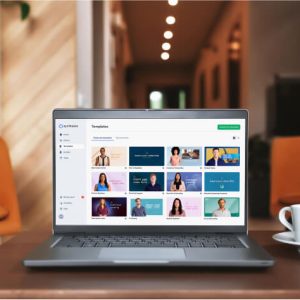Quotes from business, political or cultural figures are an ever-popular presence on social media sites, usually presented in a shareable image with a suitably “inspirational” background.
However, what we’ve noticed is that much of the time, these posts are forwarded and shared without comment, or analysis of the meaning behind the quote.
Here we’ve picked out a few quotes we’ve seen doing the rounds, but rather than take them at face value, we’ve thought about how they can apply to workplace learning, and what lessons we can learn when we unpick them.
“You don’t learn to walk by following rules. You learn by doing and falling over.”– Richard Branson
Learning on the job is probably the oldest concept in workplace learning – it’s how skills have been passed on from person to person for millennia. And there’s some value in the idea that getting on with the task at hand and learning from your mistakes, is a more effective way of learning than trying to fully digest the theory before applying it.
But for many businesses, there isn’t room for employees to make mistakes, whatever the value of the lesson if that would compromise safety, damage customer relationships or impact the brand. That’s where e-learning is most useful. Moodle Workplace, for example, has rich content authoring tools which work across multiple media, as well as being compatible with all industry content packages.
This allows businesses to build feature-rich training courses which reflect the reality of the day-to-day job and provide a sandbox for a trial and error approach to learning. And as in real life, courses can be personalised to adapt to progress made by the learner, presenting a different path through the material depending on the successes and failures so far.

“Tell me and I forget, teach me and I may remember, involve me and I learn.” – Benjamin Franklin
Ben Franklin may not have used the term himself, but this quote suggests he may have been a kinaesthetic, rather than a visual, or auditory learner. Different learning styles require different approaches to training. Traditionally this has been difficult to achieve, with time and budgetary requirements limiting the flexibility available in the classic one-to-many seminar structure.
Using a learning platform allows much greater freedom in how training materials are presented, negotiated, consumed and assessed. Bespoke content can be created within the platform to suit a variety of learning styles, drawing on the same core material but presenting it in a variety of ways. Assessment can take a number of forms, adapting to suit the learner profile. And built in communication tools allow two-way feedback, with learners able to comment on, criticise and shape the future of the training offering via dialogue with course leaders.
“In business, what’s dangerous is not to evolve.” – Jeff Bezos
This quote certainly rings true for us as a company, having grown organically from a start-up to become one of the leading Moodle Partners worldwide, with Certified Partner status both in the UK and Hong Kong. Much of that success is due to our willingness to change, adapt and evolve, keeping us at the forefront of the industry.
Those principles feed into the services we offer our clients. Our learning platforms are based on open-source technology, open to customisation and easily integrated with a range of third-party software. As the technological landscape expands, as styles of learning change, our platforms can be upgraded and extended to take advantage of innovation in the sector without having to rebuild from the ground up.
“Chains of habit are too light to be felt until they are too heavy to be broken.” – Warren Buffett
This cuts both ways. Bad habits are hard to break, but good habits, once formed, can last a lifetime. In workplace e-learning, promoting good habits begins at an organisational level, fostering a learning culture, supporting and rewarding engagement with training.
Our LMS solutions facilitate this by promoting a continual process of learning, reflection, assessment and reward. LIke many popular apps, we use Moodle Badges as a mark of achievement, providing an element of gamification to workplace learning, and offering regular milestones to learners to keep them engaged.
Likewise, the Moodle mobile app makes it the work of a few minutes for a learner to check in on their current progress, plan their next session or even complete activities right there and then. “Little and often” is a phrase we hear applied to everything from learning the violin to working out. Moodle makes that possible within the workplace.
“Quality is much better than quantity. One home run is much better than two doubles.” – Steve Jobs
Blindly throwing money at a problem rarely helps in the long term. Blindly throwing information at learners is about as successful. In the early days of e-learning adoption in the workplace, we came across plenty of examples of this.
Companies purchasing learning platforms and then proceeding to upload every training resource and policy doc they had on file was a common approach. From the point of view of the learner, the result was an information overload – and a complete turnoff.
Our Moodle Workplace platforms allow organisations to gather, store and present key information in a variety of styles, personalised to the individual learner. This ensures that the information each learner receives is relevant and that it fits into the overall course structure in a logical way.
If a user is making quick progress through a course, then Moodle Workplace will signpost more advanced topics, if they’re struggling on one element, they’ll be directed to more in-depth information to help them make sense of it.
The most powerful advantage though is in the use of powerful reporting and analytic tools within the platform to gather data and feedback on whole groups of learners, or at an individual level, see where the common fail points or difficulties occur, and redesign the course to more effectively deliver the precise learning needed.
This ability to accurately assess and improve the quality of the learning experience leads to substantial improvement over time.
If you’d like to learn more about how to improve the effectiveness and impact of e-learning in your organisation.






